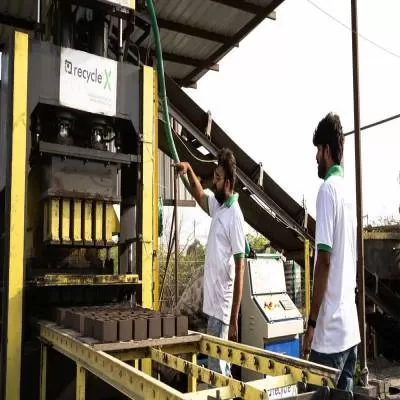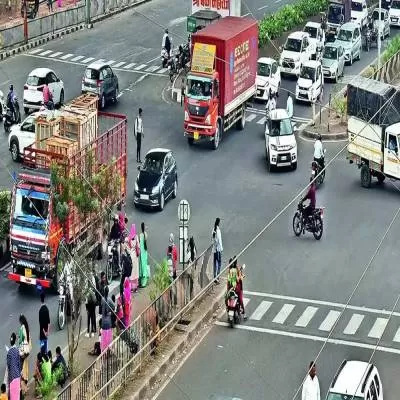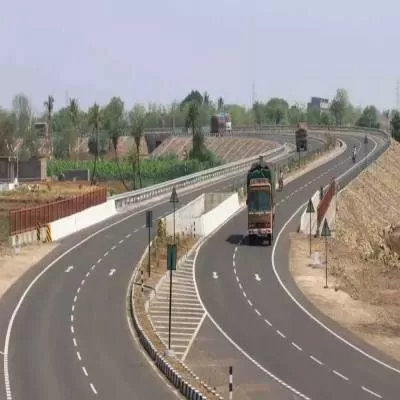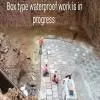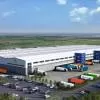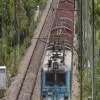- Home
- Infrastructure Transport
- ROADS & HIGHWAYS
- Under Pressure
Under Pressure
FIRST Infocentre, analyses the reasons why the construction industry is dealing with one more round of cost escalation.
Construction costs have risen dramatically in India during 2010-11. Indeed, the effects of the post-recession recovery on the Rs 15,000 billion industry in the country have been severe. Construction cost increased 8.4 per cent in 2010-11 as against just 4 per cent in 2009-10. It was worrisome at over 10 per cent in 2008-09 when the recession struck global financial markets and commodity prices were at their all-time high.
Steel prices plummeted around the world in the second half of 2008-09 and continued to remain low for quite some time in 2009-10. Indian steel prices too mirrored the global trend as they declined more than 10 per cent during 2009-10. However, in 2010-11, prices raised their head, recovering all the losses of 2009-10.
In contrast, cement prices, not glued to international commodity prices like steel, saw a hike of around 8 per cent in 2009-10 only to sober down to less than 2 per cent in 2010-11. Here, glut in capacity played a crucial role in containing cement prices. Come 2011-12, construction cost would rise at a lower rate of 7.5 per cent. However, the real value of construction output will rise at a faster rate of 9.8 per cent as against 8 per cent in 2010-11.
The infrastructure market continues to be strong with over Rs 306,700 crore ($68 billion) to be spent on the infrastructure and energy sectors by the Central Government in 2011-12 (see CW April 2011 issue, page 110). Further, preliminary indication of spending $1 trillion on infrastructure in the Twelfth Five Year Plan period is an appealing amount for the construction industry. The residential and commercial markets are also slowly showing signs of recovery. And this would further bring business to the construction industry this year.
Raw materials
The prices of cement and steel, the key raw materials for construction, have shot up sharply in recent months. Steel prices have risen by 10 per cent while retail numbers of cement have shot up 34 per cent since the beginning of 2011. Going ahead, they may moderate a bit owing to high base and demand may not pick up soon. For 2011-12, steel prices will be up 6-12 per cent across specification as iron prices have almost doubled in 2010-11. This will have a cascading effect on finished steel products in 2011-12. International steel prices are already up 18 per cent in the first quarter of 2011, and with Japan beginning to rebuild structures after the massive earthquake in March, demand for steel will get a boost. This may have impact on Indian steel prices, as export markets will be more lucrative than domestic ones.
Cement prices too jumped 8-10 per cent in 2011-12, as fuel prices supported the uptrend. Coal prices have already risen by more than 10 per cent in 2010-11 and are likely to go up by another 10 per cent in 2011-12, given the shortage in domestic coal supplies and a 36 per cent rise in global coal prices in the first quarter of 2011. Steel accounts for almost 25-30 per cent of cost of construction and cement accounts for 15-20 per cent of cost. Thus, these two will alone contribute to a rise of 9 per cent in construction cost in 2011-12.
Other raw material inputs like bricks and sand bitumen (in case of road construction) may remain flat in 2011-12, given their recent hikes. Together, they may see a rise of 5-6 per cent in 2011-12.
Interest burden
Construction companies will continue to remain under interest cost burden owing to the rising interest rate scenario, deterioration in working capital and higher funding needs for build-operate-transfer (BOT) projects. The interest burden would have been much higher had the number of projects awarded risen. During the year, only 44 National Highways Authority of India (NHAI) projects were up for grabs. In 2011-12, NHAI aims to up the number to 100.
As in March 2010, 46 construction and engineering companies had an aggregate debt of Rs 35,850 crore (both secured and unsecured loans) and their total interest outgo was Rs 3,250 crore during the financial year. This implies an interest incidence of 9.07 per cent, accounting for close to 3 per cent of total income.
In 2010-11, these 46 companies raised another Rs 7,150 crore (estimates) debt at a higher rate of interest. The average interest incidence works out to 9.50 per cent for the year, almost 50 basis points above the average for 2009-10.
The rising interest burden can be gauged by the incremental debt/interest ratio. During 2009-10, the incremental debt to interest ratio was 8.93 per cent implying a low rate of interest for the additional net debt raised by companies during the year. In 2010-11, this ratio has jumped to 11.4 per cent, indicating a sharp rise in interest rate.
Labour costs
Over the past three years, construction labour cost has increased by more than 10 per cent annually, with the increase peaking at 12.5 per cent in 2009-10. Even in 2010-11, labour cost has increased close to 10 per cent. However, in 2011-12, the increase is likely to sober to 5 per cent assuming increased mechanisation in construction activity amid lower availability of labour. The possibility of reduced construction activity in the Middle East may force many migrant workers back to India, thus increasing availability and lessening overall labour costs.
For the 46 construction and engineering companies, employee costs accounted for 5.80 per cent of their total operating income in 2009-10. In 2010-11, the cost is estimated to have increased 18 per cent, accounting for 6.15 per cent of their total income during the year. The increase was faster than sales growth of 12 per cent during the year. This implies that the additional cost of employees to generate one unit of income has close to doubled. This works out to 4.9 per cent in 2009-10 and 8.76 per cent for 2010-11. Thus, labour has turned out to be sticky for the construction industry. However, the stickiness is likely to reduce in 2011-12, when employee cost will increase 15 per cent as against income growth of 18 per cent.
(Researched by Nitin Madkaikar, Head, First Infocentre)
What do you think about this article? Write in at feedback@ASAPPmedia.com
FIRST Infocentre, analyses the reasons why the construction industry is dealing with one more round of cost escalation. Construction costs have risen dramatically in India during 2010-11. Indeed, the effects of the post-recession recovery on the Rs 15,000 billion industry in the country have been severe. Construction cost increased 8.4 per cent in 2010-11 as against just 4 per cent in 2009-10. It was worrisome at over 10 per cent in 2008-09 when the recession struck global financial markets and commodity prices were at their all-time high. Steel prices plummeted around the world in the second half of 2008-09 and continued to remain low for quite some time in 2009-10. Indian steel prices too mirrored the global trend as they declined more than 10 per cent during 2009-10. However, in 2010-11, prices raised their head, recovering all the losses of 2009-10. In contrast, cement prices, not glued to international commodity prices like steel, saw a hike of around 8 per cent in 2009-10 only to sober down to less than 2 per cent in 2010-11. Here, glut in capacity played a crucial role in containing cement prices. Come 2011-12, construction cost would rise at a lower rate of 7.5 per cent. However, the real value of construction output will rise at a faster rate of 9.8 per cent as against 8 per cent in 2010-11. The infrastructure market continues to be strong with over Rs 306,700 crore ($68 billion) to be spent on the infrastructure and energy sectors by the Central Government in 2011-12 (see CW April 2011 issue, page 110). Further, preliminary indication of spending $1 trillion on infrastructure in the Twelfth Five Year Plan period is an appealing amount for the construction industry. The residential and commercial markets are also slowly showing signs of recovery. And this would further bring business to the construction industry this year. Raw materials The prices of cement and steel, the key raw materials for construction, have shot up sharply in recent months. Steel prices have risen by 10 per cent while retail numbers of cement have shot up 34 per cent since the beginning of 2011. Going ahead, they may moderate a bit owing to high base and demand may not pick up soon. For 2011-12, steel prices will be up 6-12 per cent across specification as iron prices have almost doubled in 2010-11. This will have a cascading effect on finished steel products in 2011-12. International steel prices are already up 18 per cent in the first quarter of 2011, and with Japan beginning to rebuild structures after the massive earthquake in March, demand for steel will get a boost. This may have impact on Indian steel prices, as export markets will be more lucrative than domestic ones. Cement prices too jumped 8-10 per cent in 2011-12, as fuel prices supported the uptrend. Coal prices have already risen by more than 10 per cent in 2010-11 and are likely to go up by another 10 per cent in 2011-12, given the shortage in domestic coal supplies and a 36 per cent rise in global coal prices in the first quarter of 2011. Steel accounts for almost 25-30 per cent of cost of construction and cement accounts for 15-20 per cent of cost. Thus, these two will alone contribute to a rise of 9 per cent in construction cost in 2011-12. Other raw material inputs like bricks and sand bitumen (in case of road construction) may remain flat in 2011-12, given their recent hikes. Together, they may see a rise of 5-6 per cent in 2011-12. Interest burden Construction companies will continue to remain under interest cost burden owing to the rising interest rate scenario, deterioration in working capital and higher funding needs for build-operate-transfer (BOT) projects. The interest burden would have been much higher had the number of projects awarded risen. During the year, only 44 National Highways Authority of India (NHAI) projects were up for grabs. In 2011-12, NHAI aims to up the number to 100. As in March 2010, 46 construction and engineering companies had an aggregate debt of Rs 35,850 crore (both secured and unsecured loans) and their total interest outgo was Rs 3,250 crore during the financial year. This implies an interest incidence of 9.07 per cent, accounting for close to 3 per cent of total income. In 2010-11, these 46 companies raised another Rs 7,150 crore (estimates) debt at a higher rate of interest. The average interest incidence works out to 9.50 per cent for the year, almost 50 basis points above the average for 2009-10. The rising interest burden can be gauged by the incremental debt/interest ratio. During 2009-10, the incremental debt to interest ratio was 8.93 per cent implying a low rate of interest for the additional net debt raised by companies during the year. In 2010-11, this ratio has jumped to 11.4 per cent, indicating a sharp rise in interest rate. Labour costs Over the past three years, construction labour cost has increased by more than 10 per cent annually, with the increase peaking at 12.5 per cent in 2009-10. Even in 2010-11, labour cost has increased close to 10 per cent. However, in 2011-12, the increase is likely to sober to 5 per cent assuming increased mechanisation in construction activity amid lower availability of labour. The possibility of reduced construction activity in the Middle East may force many migrant workers back to India, thus increasing availability and lessening overall labour costs. For the 46 construction and engineering companies, employee costs accounted for 5.80 per cent of their total operating income in 2009-10. In 2010-11, the cost is estimated to have increased 18 per cent, accounting for 6.15 per cent of their total income during the year. The increase was faster than sales growth of 12 per cent during the year. This implies that the additional cost of employees to generate one unit of income has close to doubled. This works out to 4.9 per cent in 2009-10 and 8.76 per cent for 2010-11. Thus, labour has turned out to be sticky for the construction industry. However, the stickiness is likely to reduce in 2011-12, when employee cost will increase 15 per cent as against income growth of 18 per cent. (Researched by Nitin Madkaikar, Head, First Infocentre) What do you think about this article? Write in at feedback@ASAPPmedia.com



